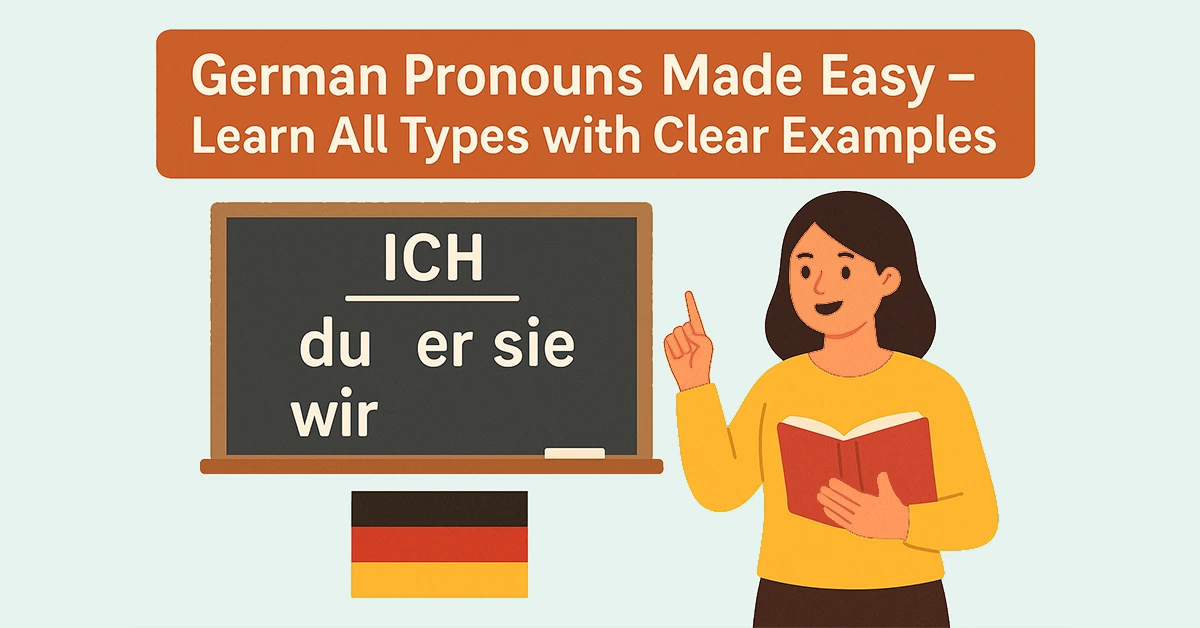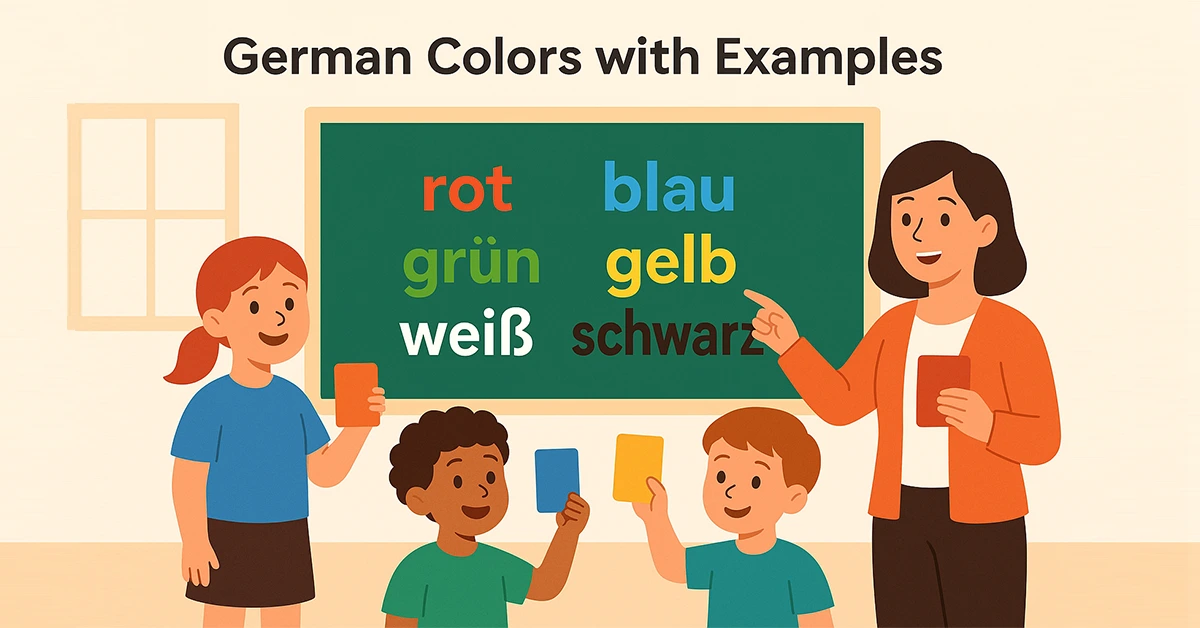German language learning
-

German Pronouns Made Easy – Learn All Types with Clear Examples
Learn all types of German pronouns with simple explanations and examples. This complete guide covers personal, reflexive, possessive, and more – perfect for beginners!
-

German Colors – Learn All Color Names + Free PDF Guide
Learn all German color names from basic to advanced in one place. Includes grammar tips, real-life examples, and a free PDF for easy learning.